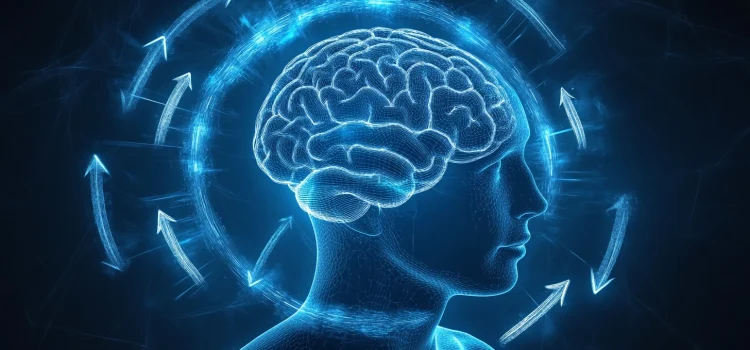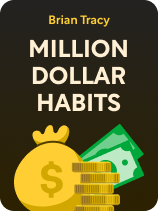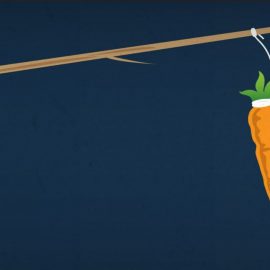

This article is an excerpt from the Shortform book guide to "Million Dollar Habits" by Brian Tracy. Shortform has the world's best summaries and analyses of books you should be reading.
Like this article? Sign up for a free trial here.
What are the characteristics of habits? How can you form good habits?
You may not realize it, but approximately 95% of your thoughts, feelings, and behaviors stem from habits. Therefore, understanding how to form positive habits is an important part of building a successful life.
Here’s our brief overview of habit formation in psychology to help you learn how to break bad habits and embrace good ones.
Forming Habits for Success
In Million Dollar Habits, Brian Tracy explores positive habit formation in psychology and how it helps lead to success. Tracy asserts that habits shape a significant portion of your life.
(Shortform note: The claim that 95% of our behavior is habitual is somewhat controversial; some studies have concluded that it’s closer to 40%. Furthermore, while some psychologists agree with Tracy that we only freely choose 5% of our behavior, they say that the remaining 95% comes from a combination of habit and what’s happening to us at the moment. For instance, it might be your habit to go for a jog before work, but if you’ve injured your ankle, you would most likely stop jogging until it’s healed—in this example, staying home to rest isn’t habitual, nor did you freely choose to do so; that action was just the result of your circumstances.)
The Characteristics of Habits
According to Tracy, habits have three key characteristics: they’re malleable, they’re consequence-driven, and they’re emotionally motivated. By understanding these three characteristics and using them to your advantage, you can build good habits more easily.
First of all, habits are malleable, meaning they can be learned and unlearned. Habits are essentially conditioned responses triggered by specific stimuli or circumstances—for instance, if you usually eat lunch at noon, you’ll probably start feeling hungry when you see a clock showing 12 p.m..
However, you can reshape your habits by understanding this stimulus-response pattern and consciously altering your reactions. Continuing the previous example, perhaps you’re trying to lose weight, so you drink a glass of cold water or have a light snack at noon instead of eating a full meal.
(Shortform note: In Atomic Habits, James Clear also describes this stimulus-response pattern, and suggests a tool to help you take advantage of it: Plan your responses ahead of time using the formula “When this happens, I will do that.” Clear explains that this will make you more likely to consciously notice the cue that triggers your habit and to carry out your plan instead of falling back into old routines. The more specific your plan is, the more likely you are to remember it and follow through on it. For example, “When I get in my car after work, I’ll drive to the gym and do an upper body workout” is much more effective than “I’ll go to the gym after work.”)
Tracy also says that almost all habits are driven by anticipated consequences. In other words, whether you do something largely depends on the result you expect to get from that action. So, if you expect something to be beneficial, you’re more likely to do it; if you expect it to be harmful, then you probably won’t do it. This may seem obvious, but it’s a crucial starting point because it highlights the importance of aligning your habits with the outcomes you want. For example, if your goal is to make more friends, you’ll likely be more successful if you develop habits like asking people about themselves, inviting people out, and attending social events.
Finally, the strength of your emotional commitment influences how quickly you can develop a new habit. If you have a strong emotional connection to the decision to change your behavior, you’ll likely adopt the new habit more rapidly. Therefore, when attempting to establish a new habit, tap into your emotions: Visualize the benefits you’ll get from the habit, connect with the reason why you want to do it, and allow your emotional investment to fuel your commitment when it feels hard to maintain the behavior.
| Four Components of Motivation What Tracy is describing here is really motivation: How badly do you want to develop new habits, and why do you want to do so? In Limitless, life coach Jim Kwik says there are four elements to motivation, and knowing what they are will help you figure out what gets you motivated. Kwik’s four components of motivation are: 1. Purpose. What do you want to do with your life? How will you accomplish your goals? 2. Passion. What gets you excited? What makes you want to work hard? 3. Reasons. What specific things get you up and working during those times when your passion is flagging? For example, someone might become a teacher because they have a passion for education, but what gets them to work each day is knowing that their students and the school are relying on them. 4. Values. What’s most important to you, personally? You’ll be naturally motivated to take actions that align with your values—for instance, if you value kindness and generosity, you’ll probably be motivated to donate to charity or do volunteer work for a cause you believe in. |

———End of Preview———
Like what you just read? Read the rest of the world's best book summary and analysis of Brian Tracy's "Million Dollar Habits" at Shortform.
Here's what you'll find in our full Million Dollar Habits summary:
- How to achieve financial independence and a rewarding career
- The power of positive thinking in your personal and professional lives
- How avoiding salt, sugar, and white flour promotes a successful life






